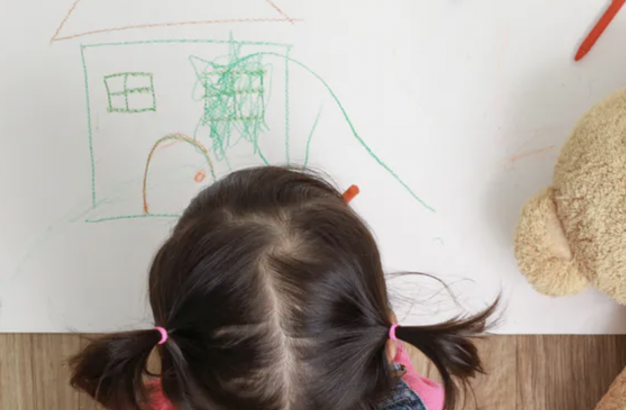
Supporting children through the coronavirus pandemic – lessons from the autistic community
During this time of unprecedented change, many children will be feeling the kind of uncertainty, lack of control and anxiety that is normally experienced by a high percentage of autistic children.
I am a researcher working on education strategies for children on the autism spectrum, and I have also worked as a special education teacher. I have researched in mainstream schools to see what works for autistic children, and how we can best support them to alleviate anxiety and maximise learning, writes Debra Costley, University of Nottingham
Some of the strategies that have been developed for children on the autism spectrum are of value to all parents and children at this time, because they are designed to be clearly communicated and to provide structure and certainty.
Here are three areas to focus on to help your child in a chaotic time, whether they are autistic or neurotypical.
Communication
For many children in the UK, their normal day-to-day life has been upended. Instead of going to school they are at home, perhaps with their parents now trying to educate them instead of their usual teachers. The children of key workers may still be in school, but with many of their peers absent and normal lessons stopped.
Autistic children often need support navigating new situations, and clear communication can help alleviate anxiety. Social Stories were developed by autism educator Carol Gray to help autistic children understand what is happening in a new situation.
A social story is usually a series of pictures with captions that explain what the situation is, what will happen, what the children are expected to do, and what the result will be. Carol Gray has written a range of social stories on pandemics and coronavirus and how children can help.
You could create your own version of a social story, explaining what is happening in your family and your community. The idea is that children can look at their social stories as often as they like to find reassurance and guidance on how they should be behaving and what they can expect to happen.
Structure and planning
Many children with additional learning needs have difficulties with “executive functions”. These include planning, self-regulation, flexible thinking and working memory. This makes it difficult for children to focus, to follow directions, and to control their own impulses or behaviour. Providing a structure to follow can support them to complete tasks.
For all children, loss of their normal routine, changed ways of learning, and not knowing what will happen next will have an impact.
All children benefit from knowing what they are expected to do, how long it should take, and what will happen when they have finished their work. Planning and keeping to a routine will help children to understand when they need to do school work and when they can do other activities, like play in the garden (if they have one), do some art work, or cook.
Timetables can help children cope with changes in their daily routine.
Sergey Novikov/Shutterstock
I was involved in research that showed how important timetables were for all children in a class, not only those on the autism spectrum. You can create a visual timetable with your child of which activities they will do when. For young children, this can include pictures to represent activities, including learning, breaks and hand washing. Older children could colour code their subject timetables to show when they will be doing maths or English, for example.
Our research also found that the development of a work system was useful for all children in a class. At its simplest, this is a tray or folder that contains the work the child needs to complete during that morning or afternoon session. This is placed on the child’s left hand side. They then complete the work as indicated on their timetable and tick it off when they have finished. All completed work is placed in another box or folder on their right hand side.
This gives a clear sense of direction, work to be completed, and satisfaction as the pile on the right becomes larger than the pile on the left. There is a lot of virtual work being set at the moment, but sticky notes or a list of set work in a notebook could be used to create your child’s own preferred work system.
Make use of special interests
Many autistic children have an area of interest that they focus on and can learn an enormous amount about, and which they like to share with other people. We call this a “special interest”.
Most children, whether autistic or neurotypical, have a special interest in something that is not necessarily related to a specific school subject. This might be space, animals, music or films. Now would be a great time to employ the knowledge that they have and encourage them to develop their own project based around their special interest.
It could include writing stories or poetry, drawing, collecting images from the internet, taking photographs, interviewing others about their experience of a particular subject, and putting it all together in a notebook or folder. The special project could be used as a reward for completing the agreed school work for the day.![]()
Debra Costley, Associate Professor Education, University of Nottingham
This article is republished from The Conversation under a Creative Commons license. Read the original article.





